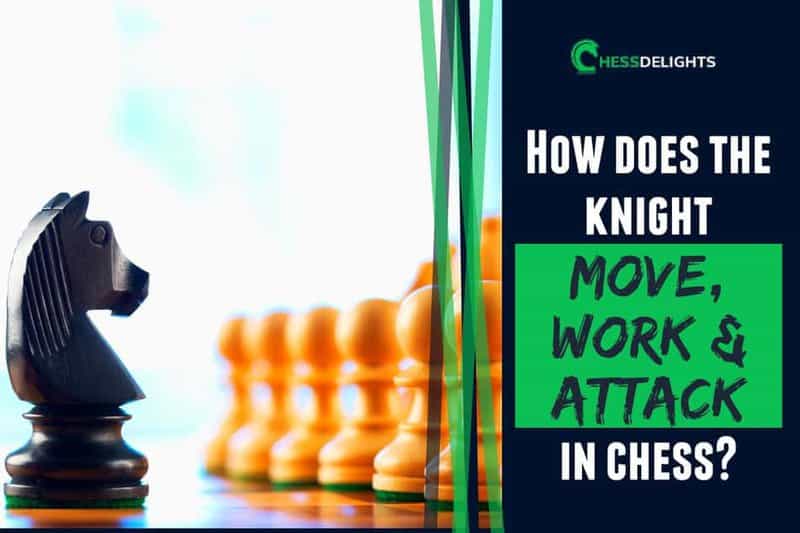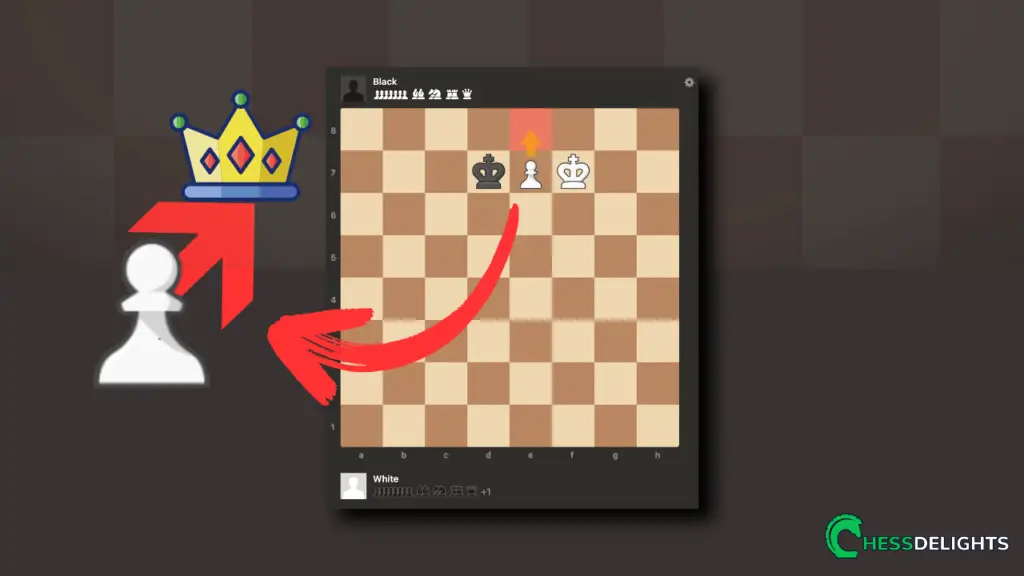I really like the knight piece, especially if I'm able to use it effectively in every game. Some chess players I played with are excellent at moving the knight to attack, you have to know that the knight does not move like the other pieces on the board.
The knight move in “L-shape” that is two squares (any directions vertically or horizontally) then end on one square to form the L-shape move. Also, knights can “jump over” pieces to make a move, regardless if it's an opponent or your own pieces. The knight is an interesting chess piece, let's learn how it works and attacks!
Table of Contents
How does the knight work in chess?
As I've mentioned earlier, the knight works or moves in an L-shape, and if you pay attention to squares of the knight where it starts you'll notice that if you move the knight it will end up on the opposite color of square. For example if the knight starts on a dark square when moving, it will then end on a light square (see images below) after moving, and vice versa.

(knight dark square to light squares)
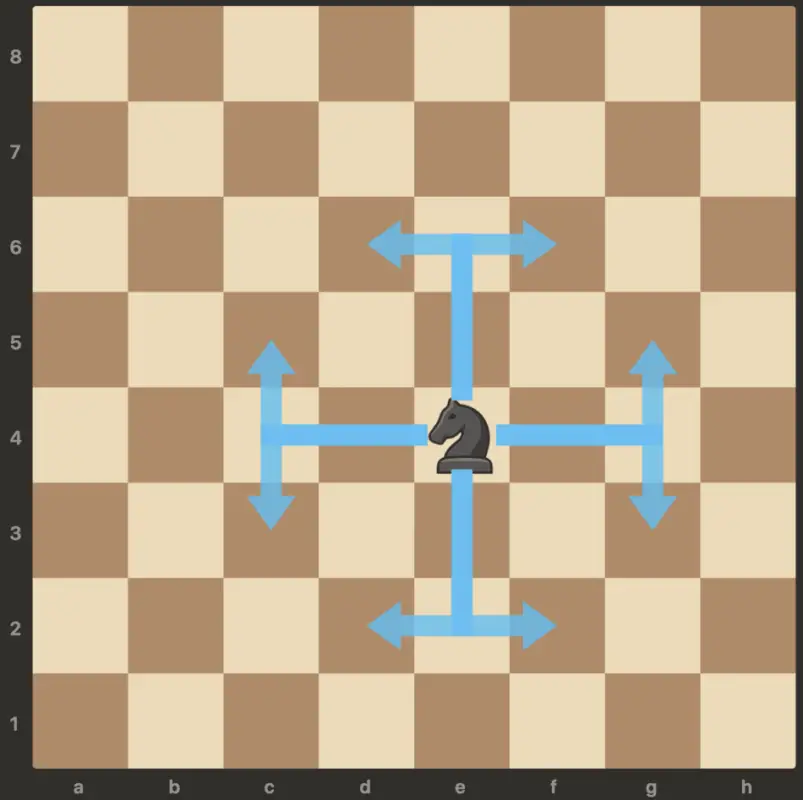
(knight light square to dark squares)
The best way to work with your knight especially in the endgame is to improve its maneuvers on the board. You have to make sure that your knight can move around the board to stop any positional advantage of your opponent.
You'll learn more about how to use your knight in the next sections.
Recommended Reading: If you want to know how to learn chess from books, read this article.
How does the knight attack in chess?
In chess, knights would attack an opponent's chess piece by moving in an L-shape and then replacing them on the square that they are on. I like how the knight attacks using the fork (see image below), and one of my favorite is attacking opponent's king with a check- because there is no way to block a check from a knight!
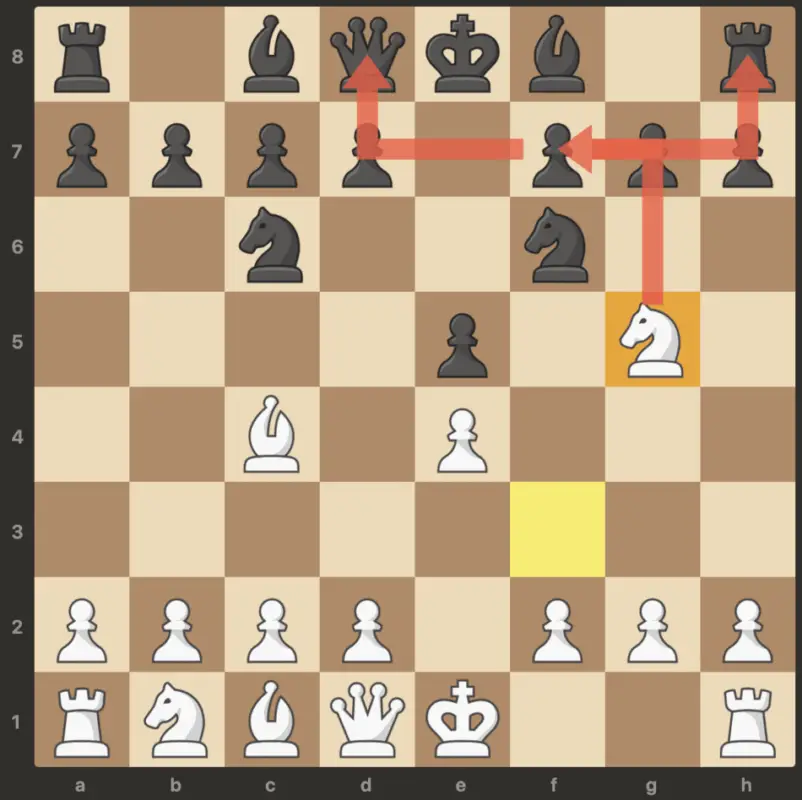
A knight can attack in chess by moving to the squares that are diagonally in front or back of the knight. This is called the L-shaped attack pattern (see image below), besides that knights can also double attack or fork attack two pieces at the same time (which you will learn in another section).

The knight attacks by jumping over other chess pieces, or onto the board squares that are adjacent to the ones that those pieces are standing on. If you watch an experienced chess player, you'll see him constantly attacking with his knight, often jumping over several pieces.
This is how the experienced player “uncovers” his opponent's king, which is one of the goals of the knight. A knight is most effective when it attacks from a position of weakness. The knight has the ability to jump over any piece no exception, and therefore it is very effective when attacking the king.
Why does the knight move in an L-shape?
Ever wondered why the knight moves in an L-shape? It's because of the medieval warfare! Knights would need to cross a field and jump over obstacles. The most direct way is a straight line, but that would leave them open for attack from enemies on their left or right. So they started moving in an L-shape where they can attack instead, so they can see what's coming at them. Cool story, huh? 🙂
Seriously, the knights move in L-shapes to control a total of eight squares (see image below), since it is the only minor piece used for short range attacks, and moves slightly diagonal as they move from their starting square. Their movement can be seen on this diagram below:
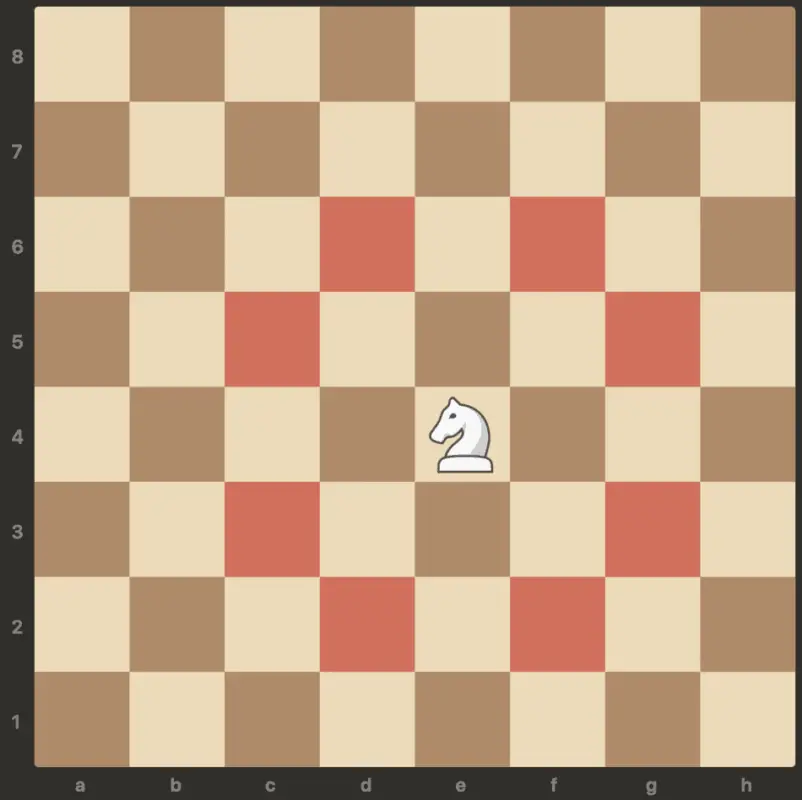
The knight's movements are hard to predict because each individual has different styles which make them unpredictable. The key factor when fighting with a knight against an opponent without any other pieces is being able to find ways around enemy defenses while making sure the attack doesn't backfire or leave your own king open.
How many spaces does the knight move in chess?
Once we know that the knight moves two squares and one square, we can say that the knight moves three spaces or squares each turn on the board following the L-shape movement. As long as it is legal to do so, you can move your knight three spaces or squares on the board in L-shape pattern.
Why knights are better in closed positions?
The Knight has a very valuable role in chess because it can attack any opponents pieces no matter where they are on the board without being restricted by open or closed positions. This makes them much more difficult to defend against than some other pieces (e.g. bishop, rook).
7 Tactics in using your knights
There are principles and tactics you need to learn with using your knight's especially when facing tough opponents!
Here are 7 tips in using your knights!
1. Use knights during closed game.
If you haven't figured it out yet, the knights are excellent when it comes to closed positions or games. This is where the knight can jump over pieces and be able to do a lot of damage to its opponents.
When you noticed that your game is starting to become a closed game, this is the time to avoid exchanging your knights in the game.
2. Use knights as fortress to protect the king.
Learning how to use your knights as a fortress during a game can save you from getting checkmated, instead you can end with a draw. Fortress is a tactic that you can use to protect your king from checks, and knights are very good at this.
3. Position your knight on a strong outpost.
Knights should be very well position on a strong outpost during a game, a strong knight post can be very annoying to your opponent but will be very advantageous for you.
Always make sure that if there's a chance for your knight to get a strong outpost, you better take advantage of it.
4. Identify knight forks.
A good chess player should learn to recognize a knight fork, practice makes this easy especially when doing puzzles.
Chess.com has an excellent chess puzzles available for free, you can start practicing how to identify these tactics using this website.
5. Knights are stronger in the middle of the board.
Having your knight in the middle of the board will surely make it a lot stronger since it can control more squares on the board. There are openings that can get your knight in the middle of the board and use it for traps or aggressive attacks.
You can also use chess.com to understand basic openings that can improve your use of the knight in a game.
6. Keep your knights away from the edge of the board.
Since one of the knight's strength is having to control more squares on the board, especially in the middle of the board – it is wise not to keep your knights at the edge of the board.
This is a basic tactic for knights, but I know there are times that we can't avoid placing our knights at the edge of the board – if this happens make sure to try your best to keep your knight as active as possible at the middle of the board.
7. Avoid placing your knights with no available squares.
What I mean about this is that you have to be aware of your own pieces blocking your knight's available square to jump over. There are instances that we may neglect looking at squares that our pieces can go which ends up getting trap or blocked in the process.
If this happens, you have to make available squares for your knight immediately, otherwise your knight is useless and may even get captured easily.
Can a knight be blocked in chess?
You can't. A blocked knight is simply one that is “pinned” by another piece like a bishop, rook or queen. A block is when you prevent a piece from moving, or stop it dead in its tracks. That's impossible with a knight. A knight can jump over any chess pieces, that is its main advantage.
However, we can also say that a blocked knight is where it can't jump over a square which is occupied by its same color not its opponent, which also mean that the mobility is restricted due to the available squares for the knight is occupied by the same color pieces.
Can knight check be blocked?
Blocking a check from a knight is not at all possible, an excellent way to use this is if you want your opponents king to be deprived of being able to castle once it moves. If you are able to check your opponents king with a knight, it has no choice but to move, unless your knight can be captured.
Also, besides not being able to block a knight check you should also learn about knight's double threat or double attack (see image below)!

First, it attacks the king… and secondly, it attacks the bishop! And that makes it very hard for the defending player to find a way to stop it.
Can a knight move backward in chess?
Yes you can, knights can move L-shape forward, and backward but depending on its position on the board. If the knight is on the edge of the board then it can only go to available squares (see image below) like forward and side of the board.

Wrapping Up
So, the knight moves in an L-shape that is two squares (any directions vertically or horizontally) then end on one square to form the L-shape move. The best way to work with your knight especially in the endgame is to improve its maneuvers on the board to stop any positional advantage of your opponent.
I like using the knight to capture the queen, using knight's fork attack – sometimes we get overconfident that we lose the game because we forgot to analyze the knight's move and capture the most powerful chess piece on the board.
Recommended reading: If you want to learn effective ways to learn chess, read this article.

